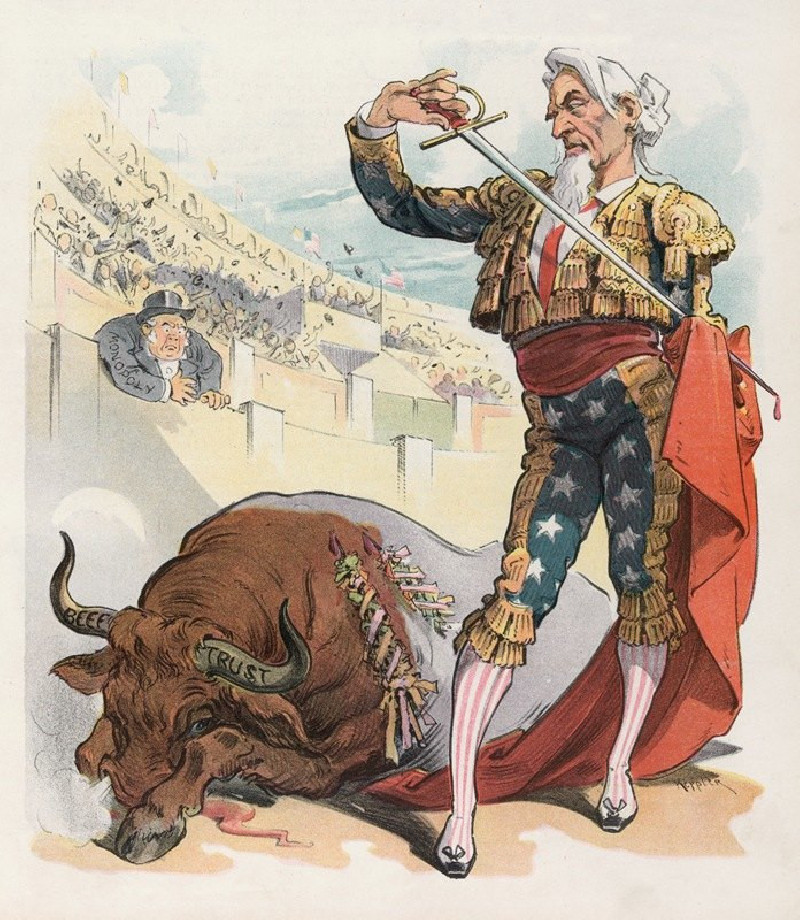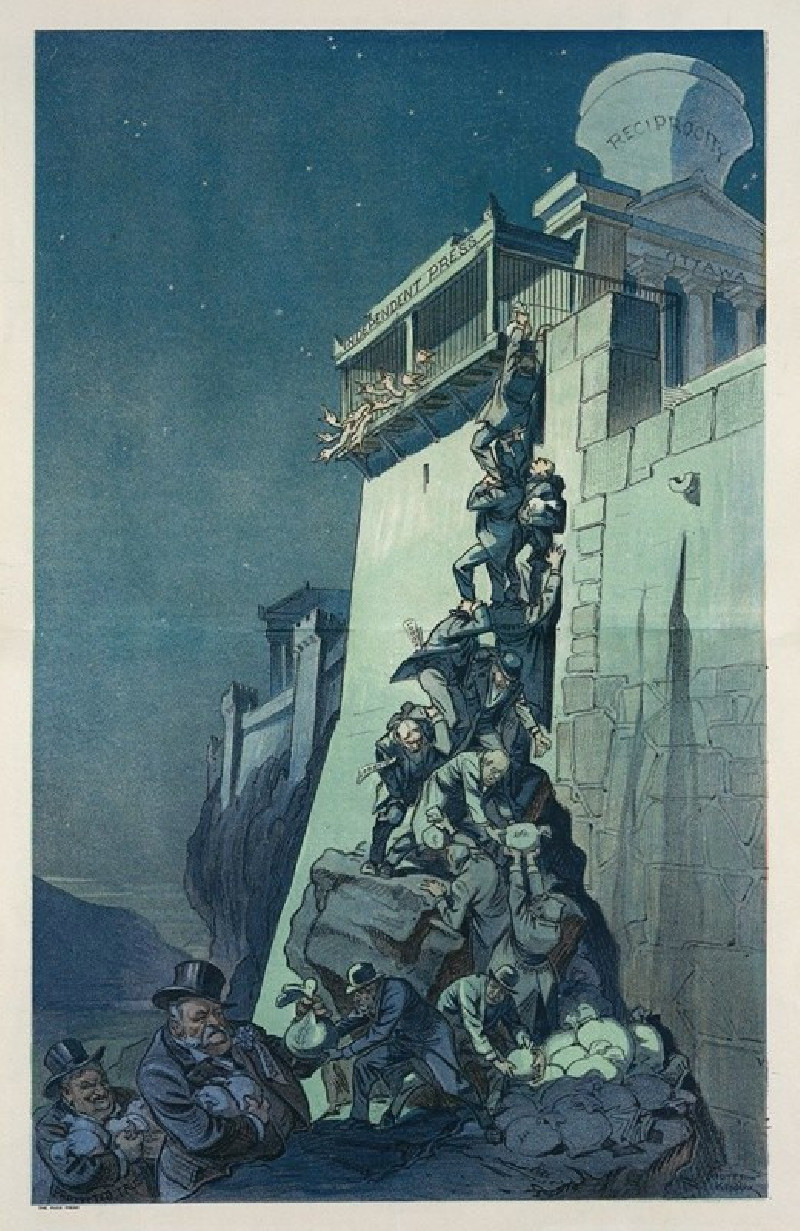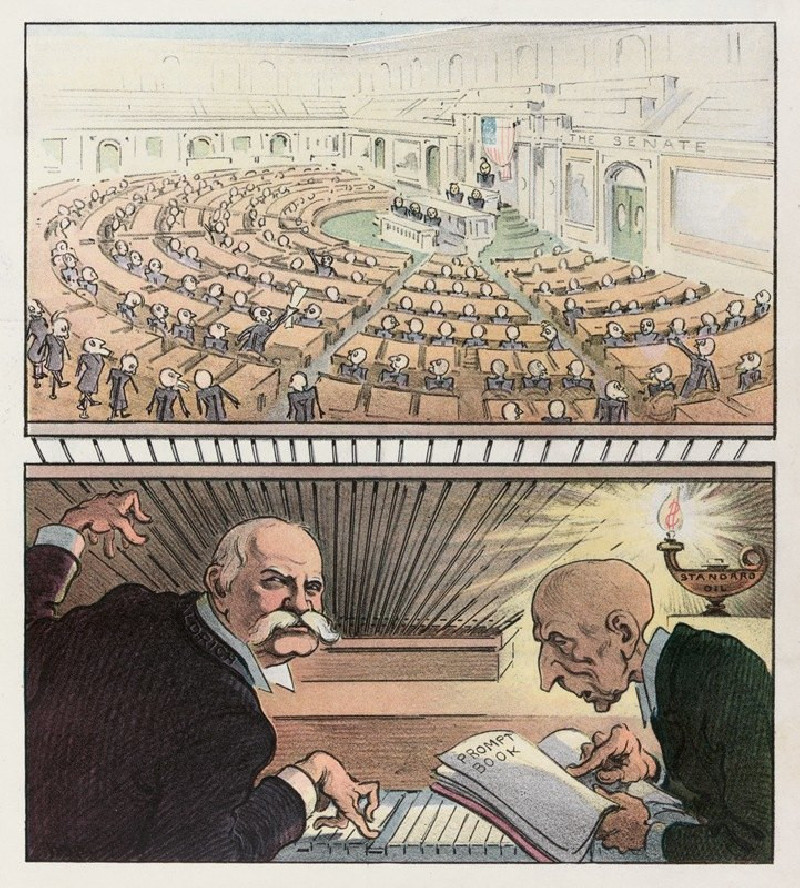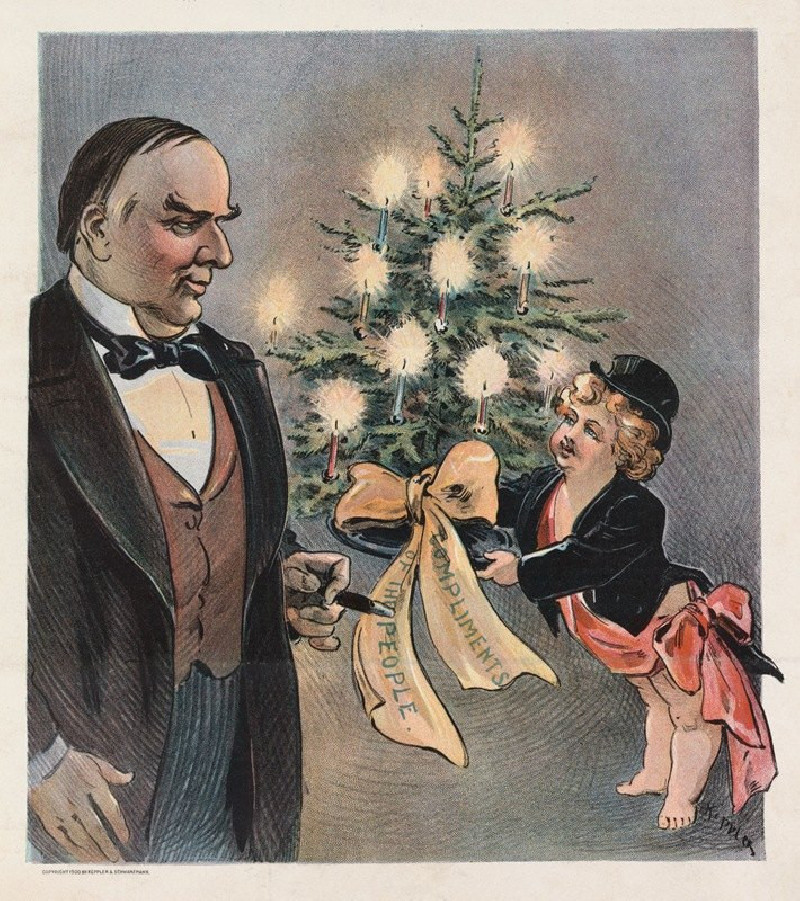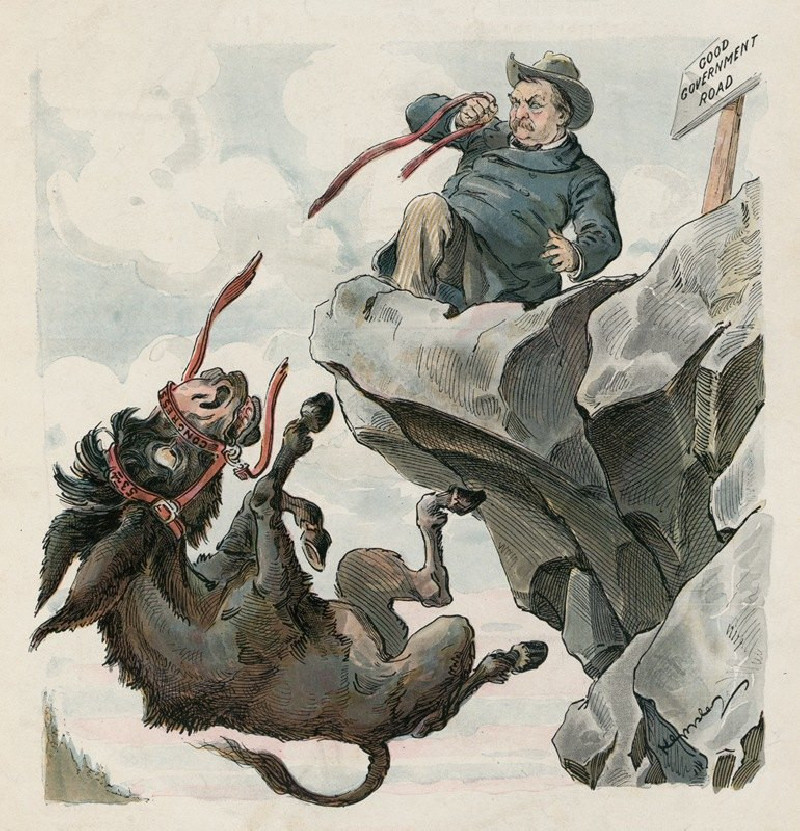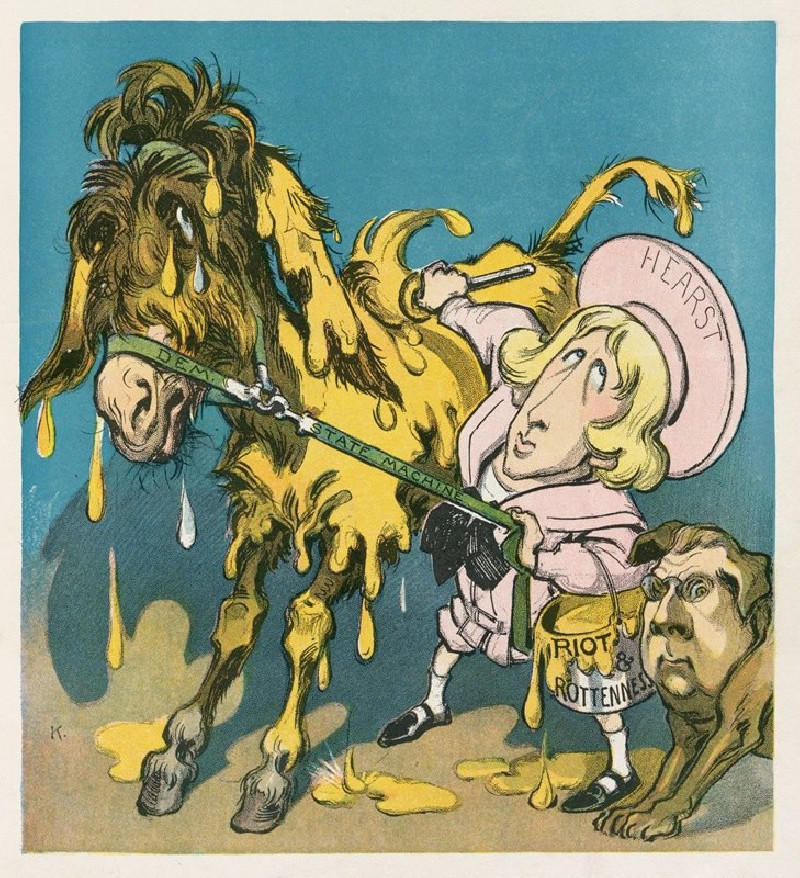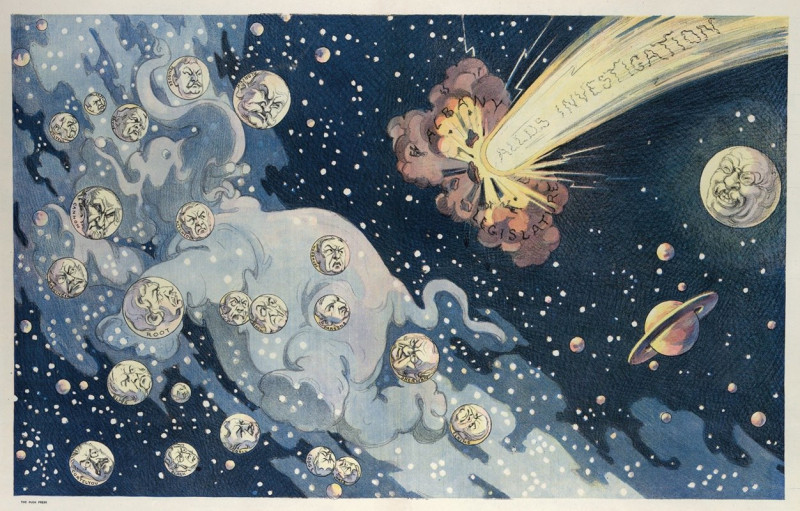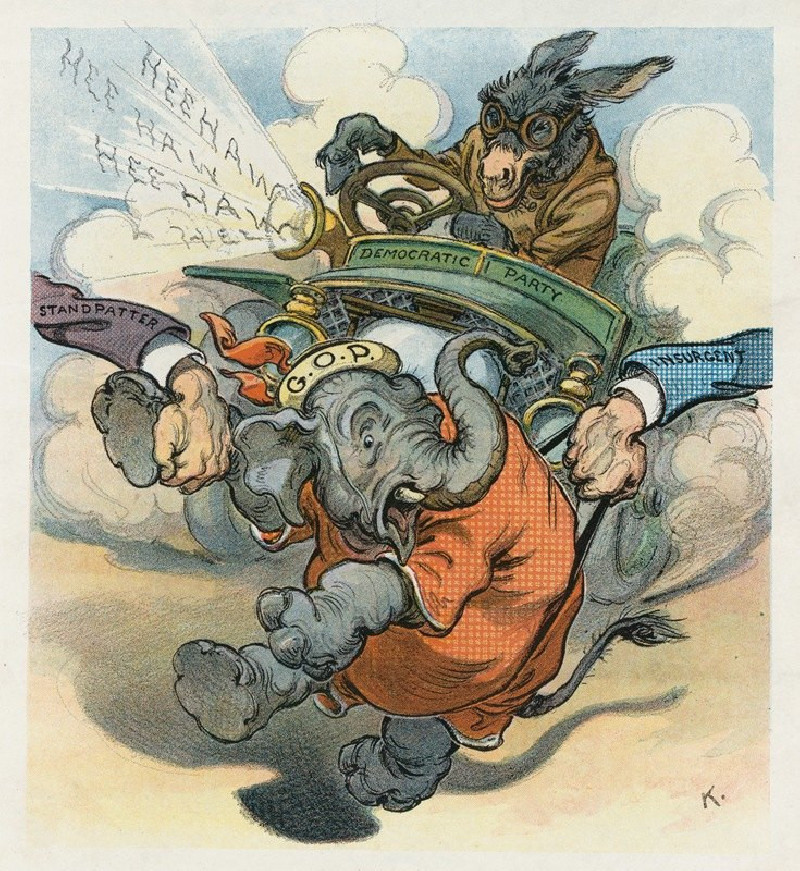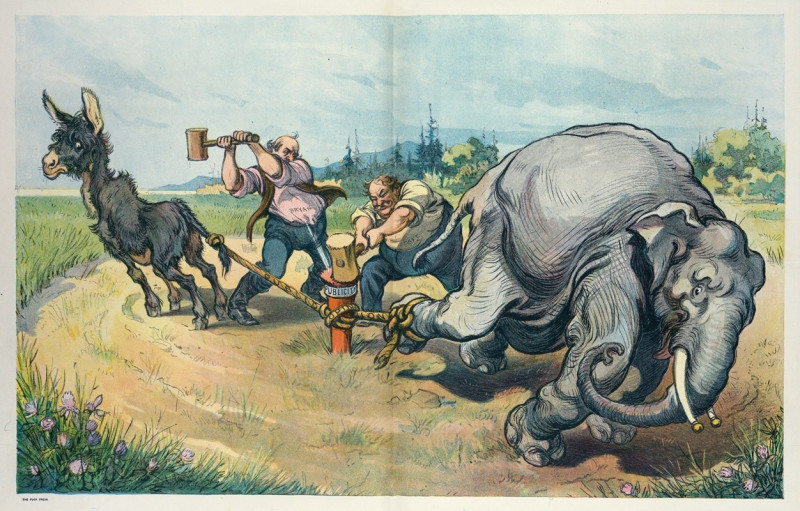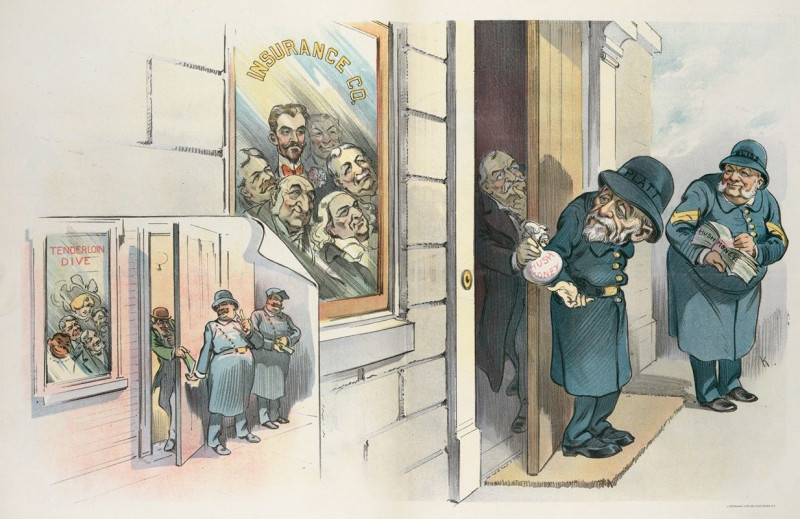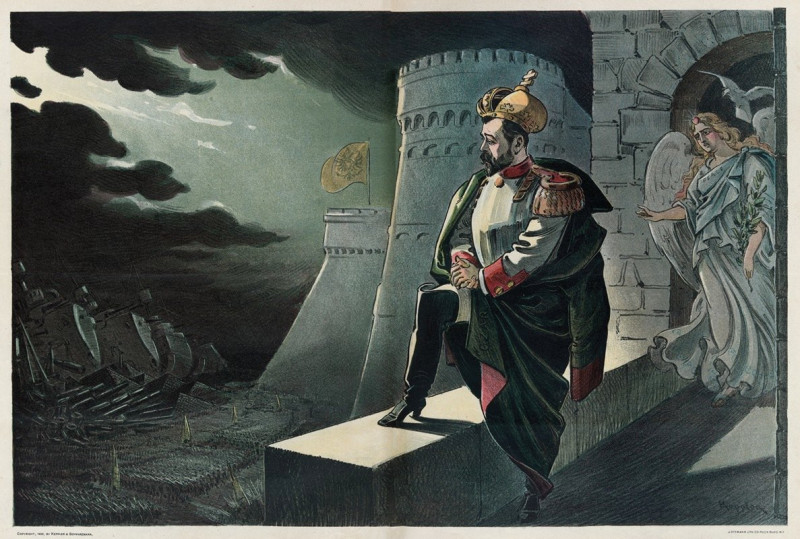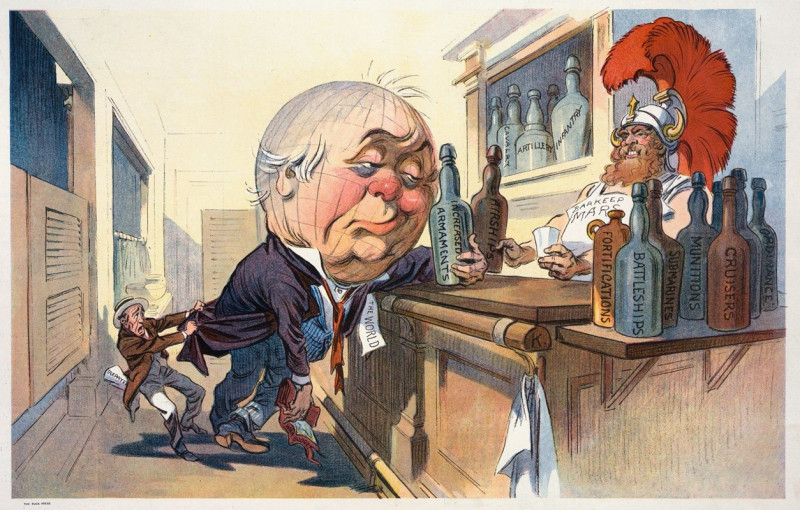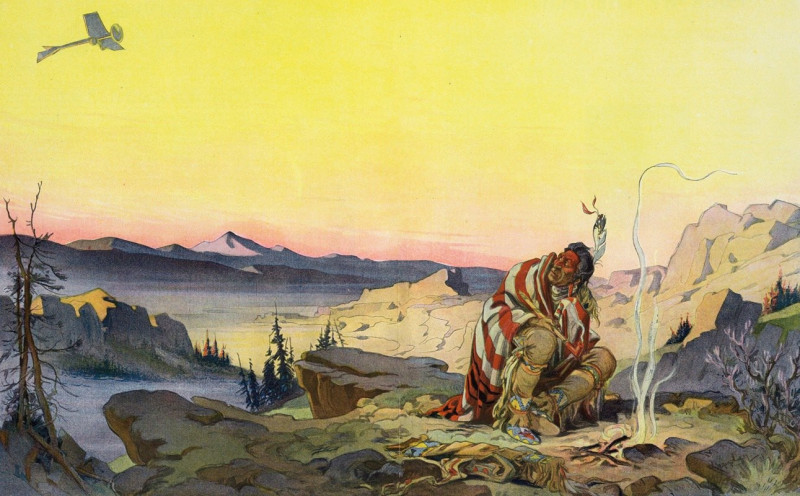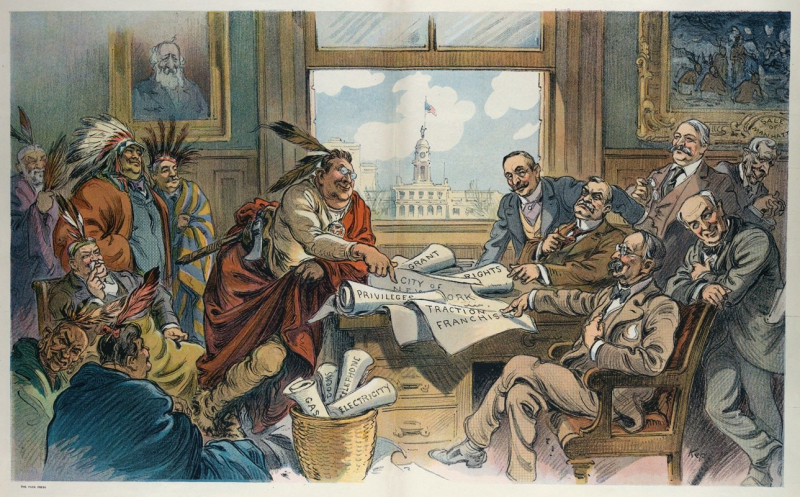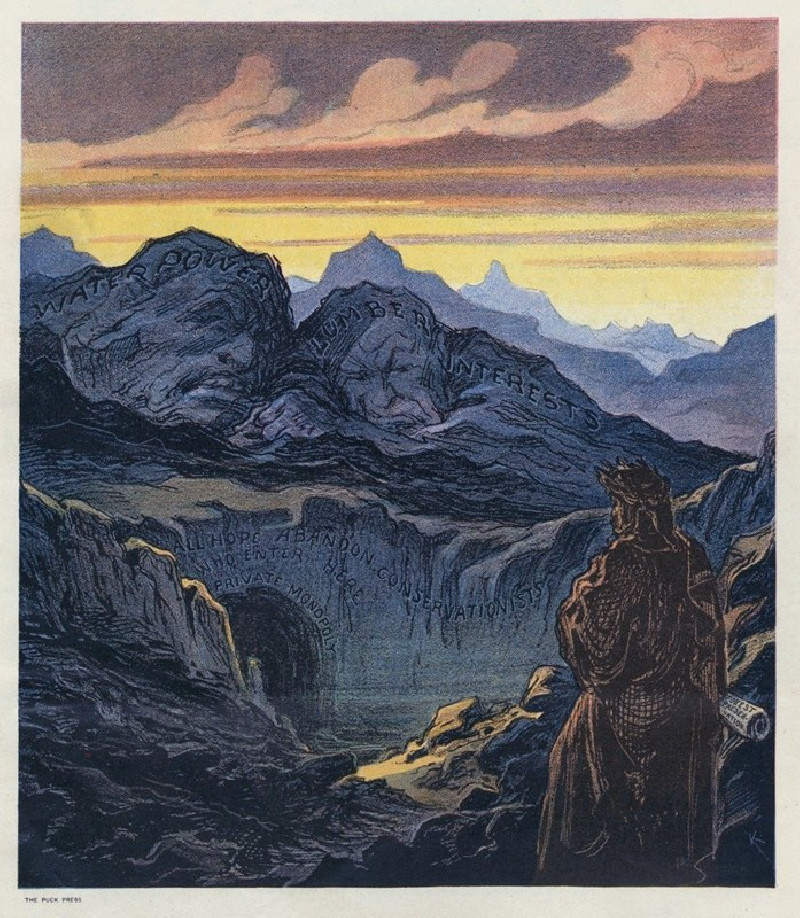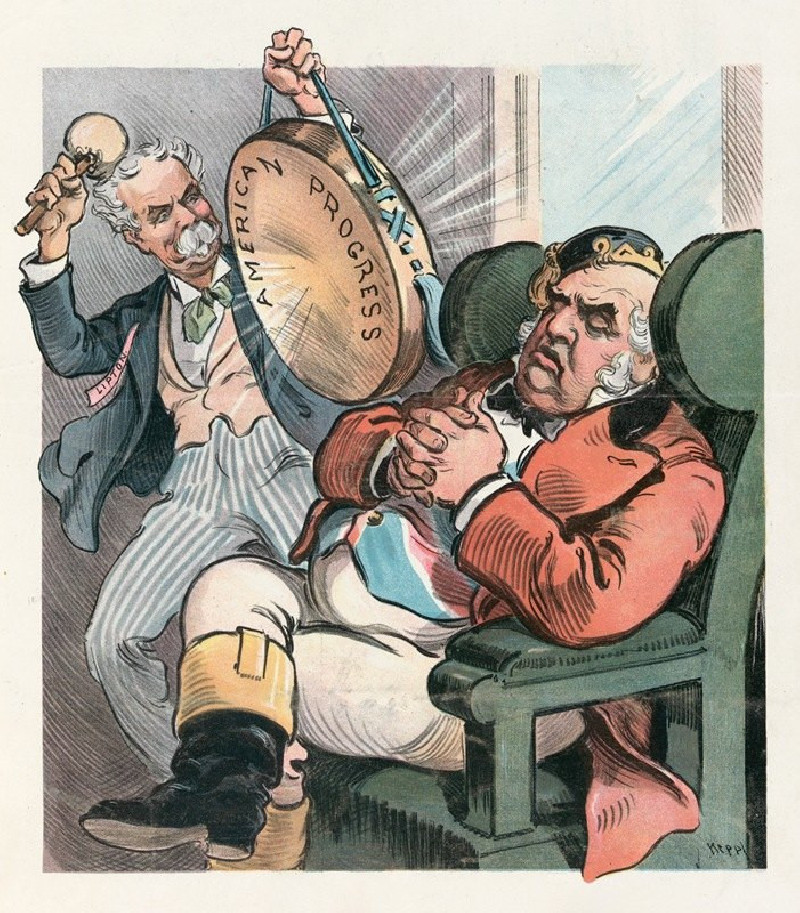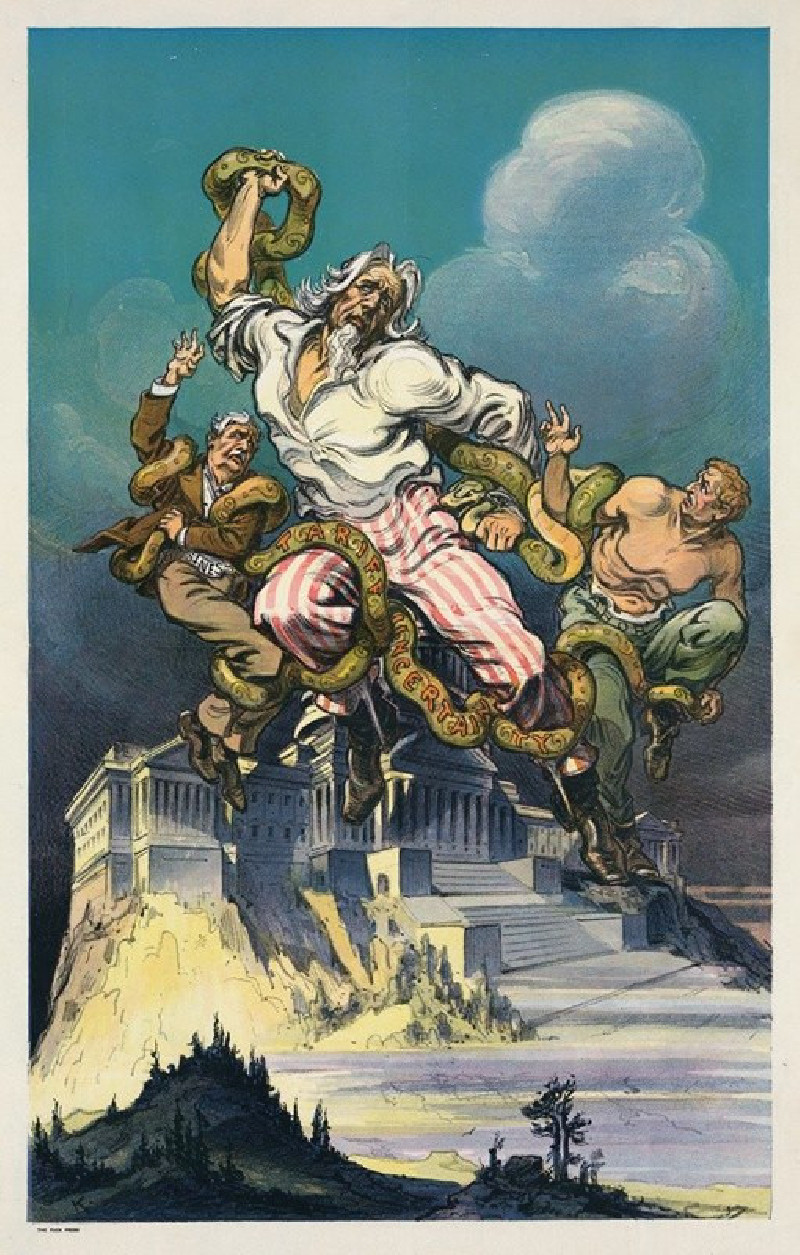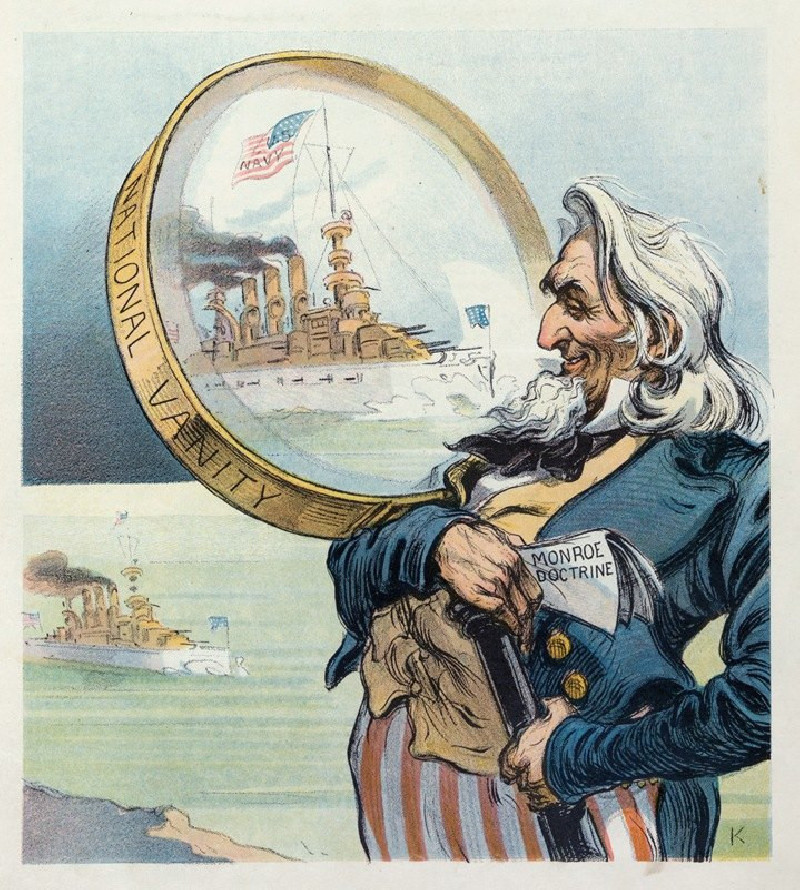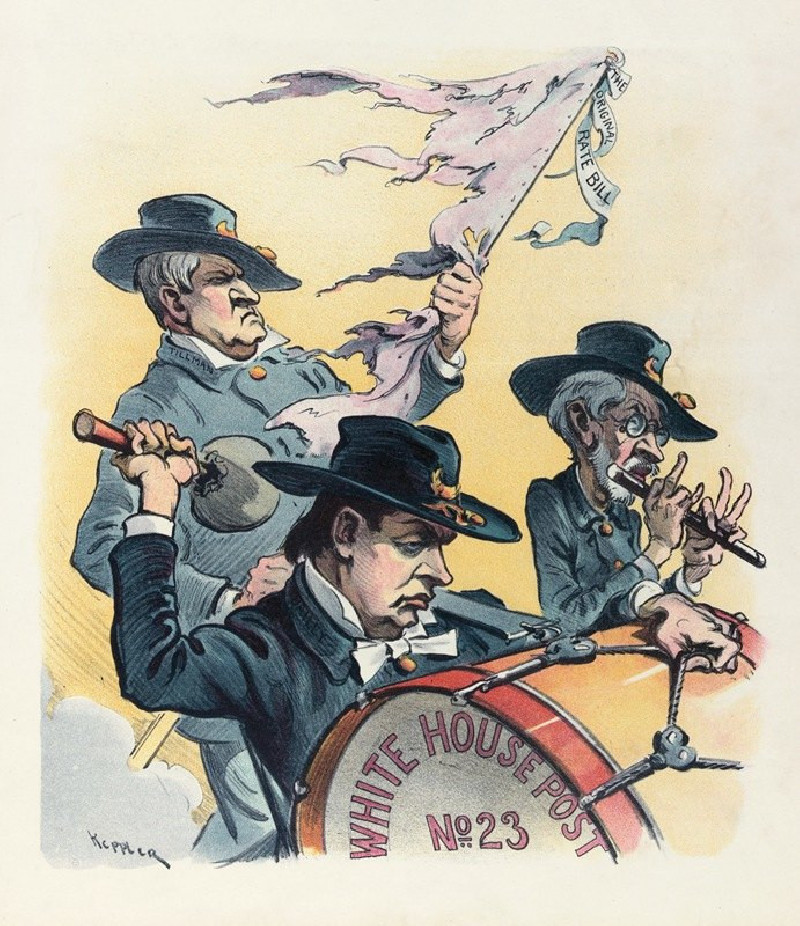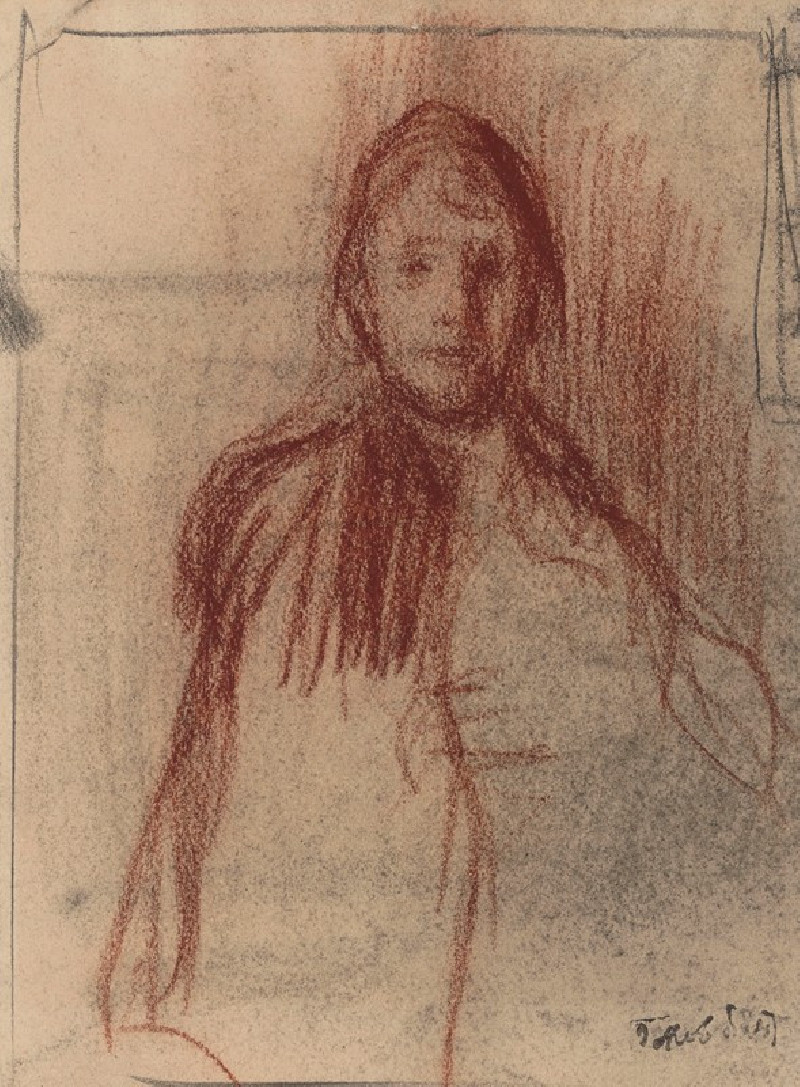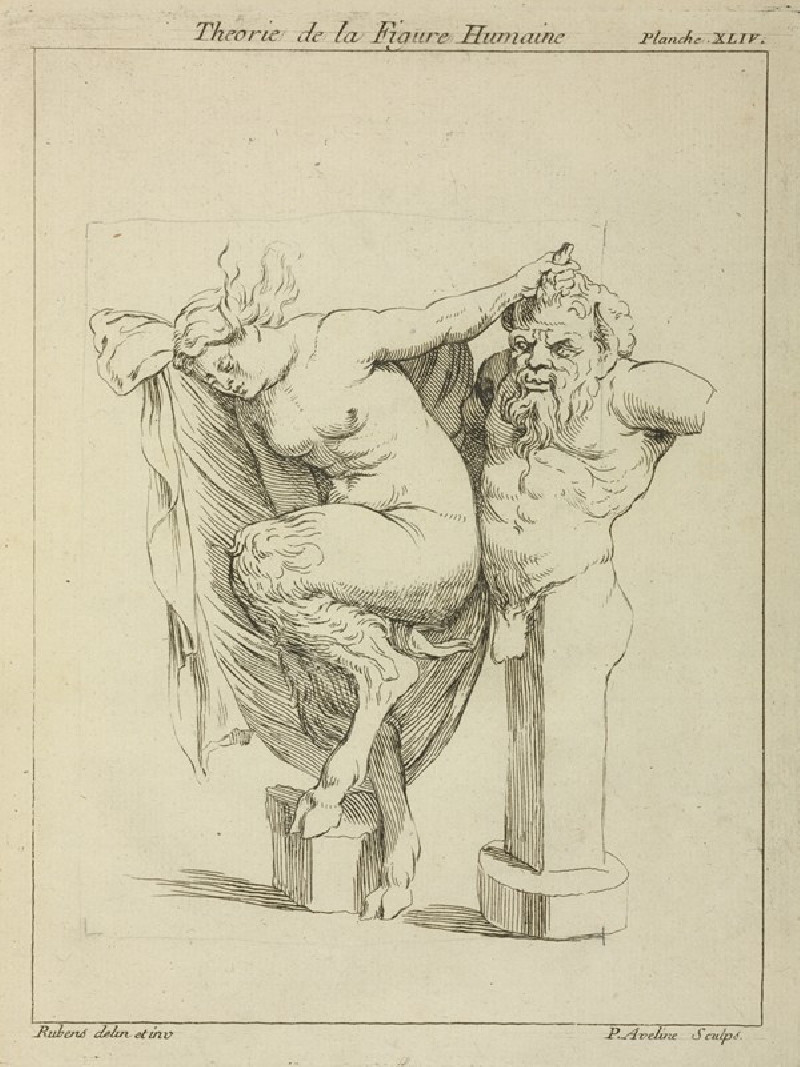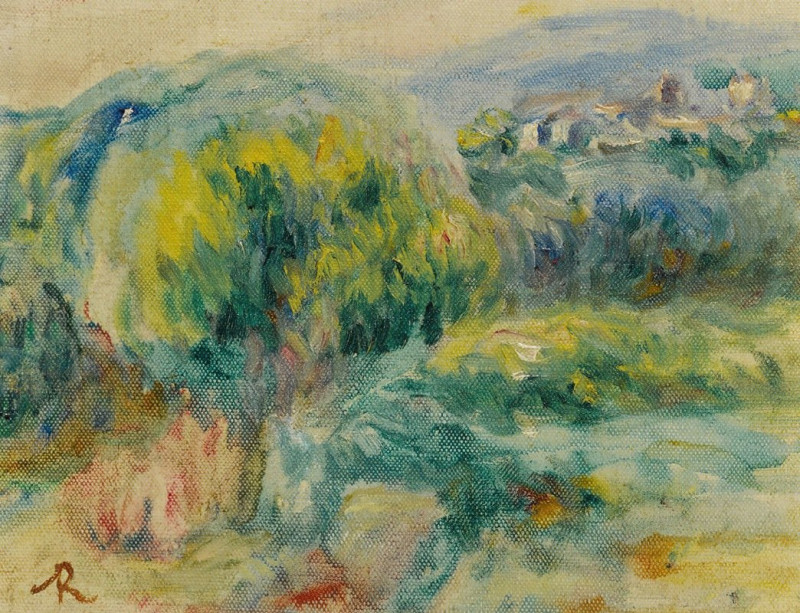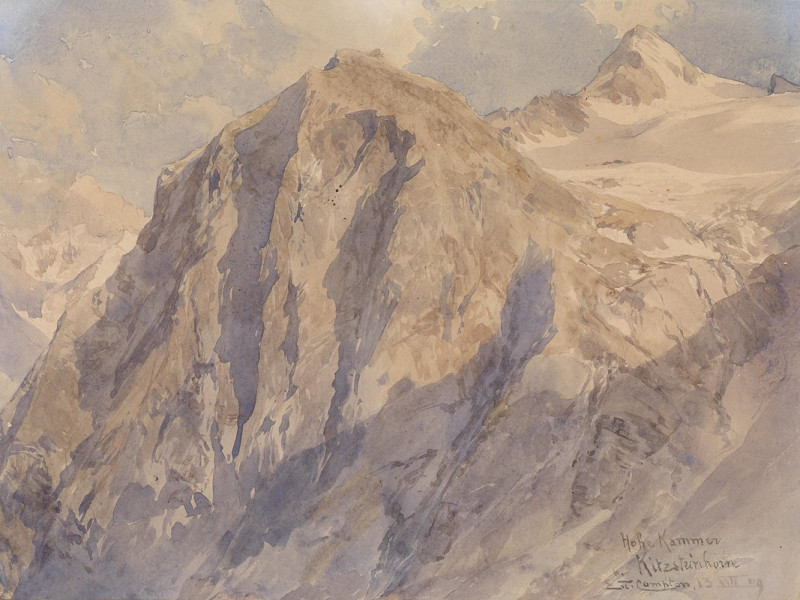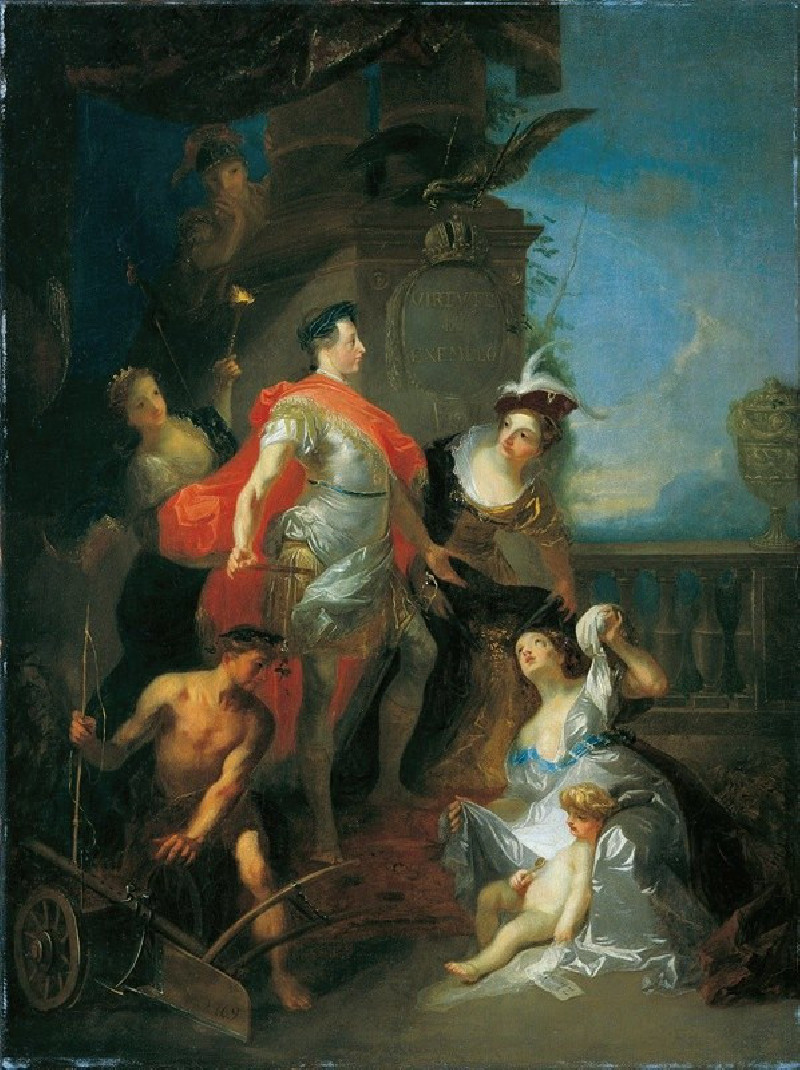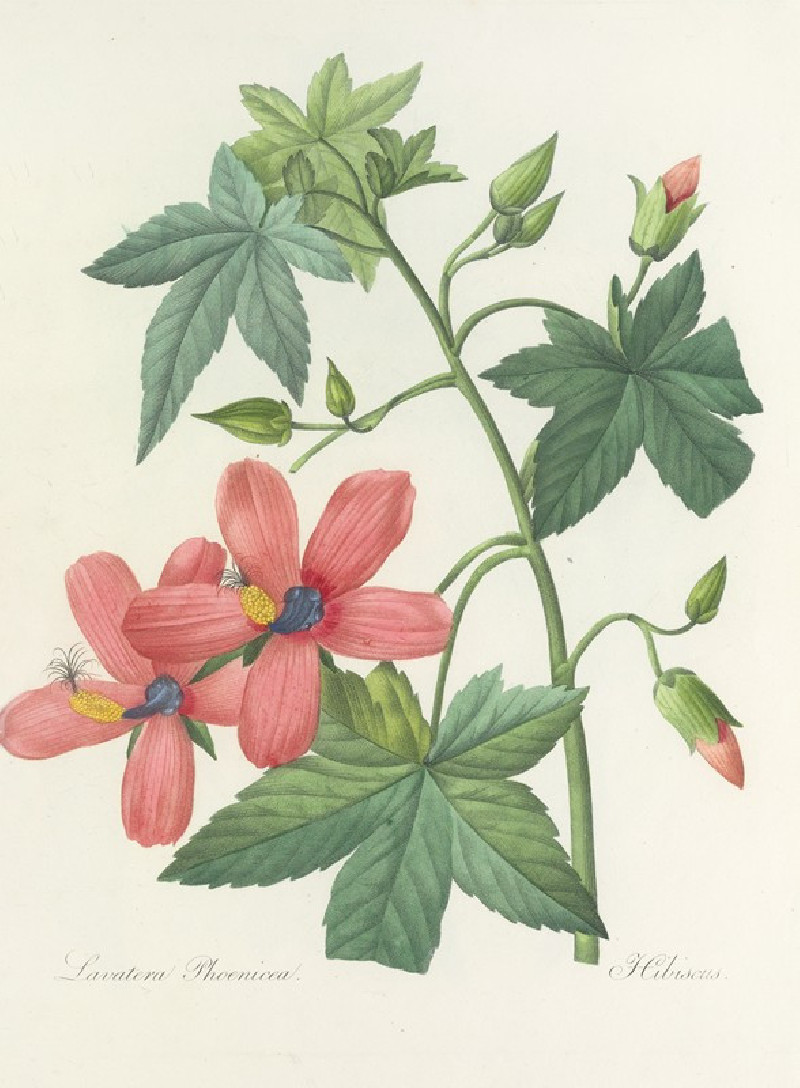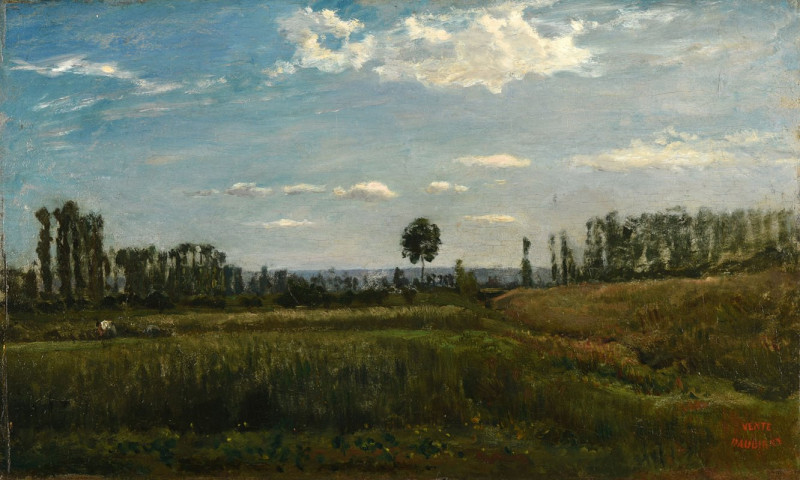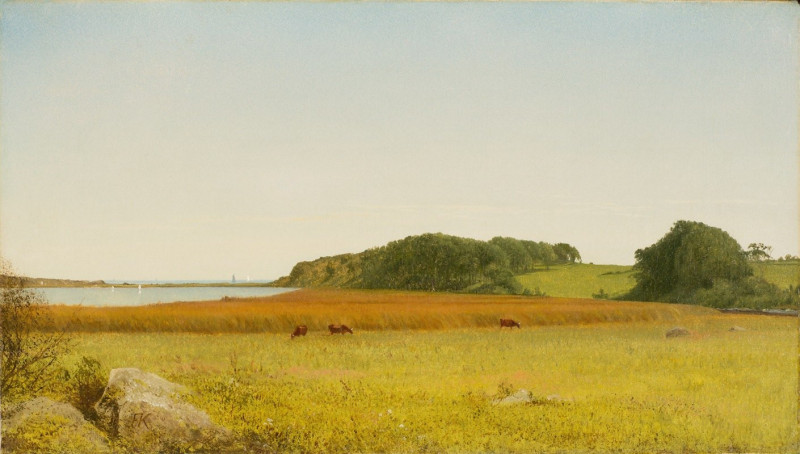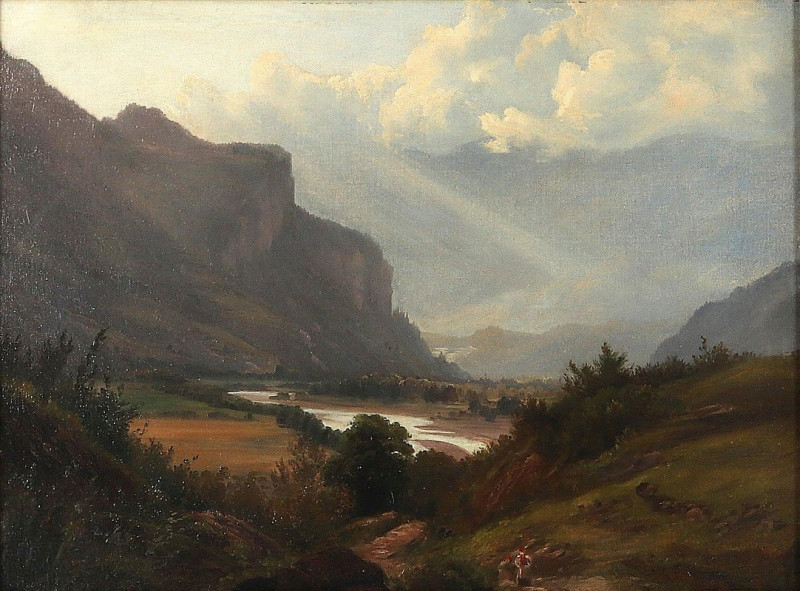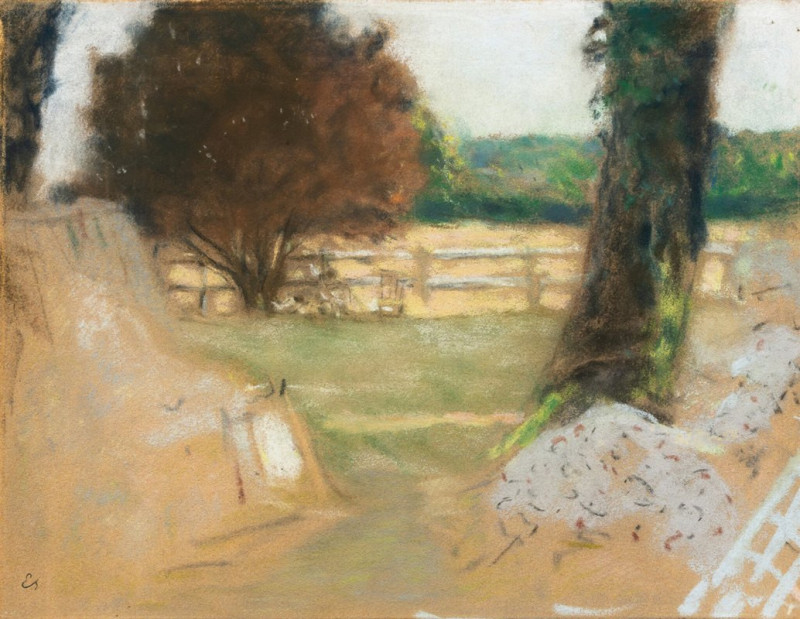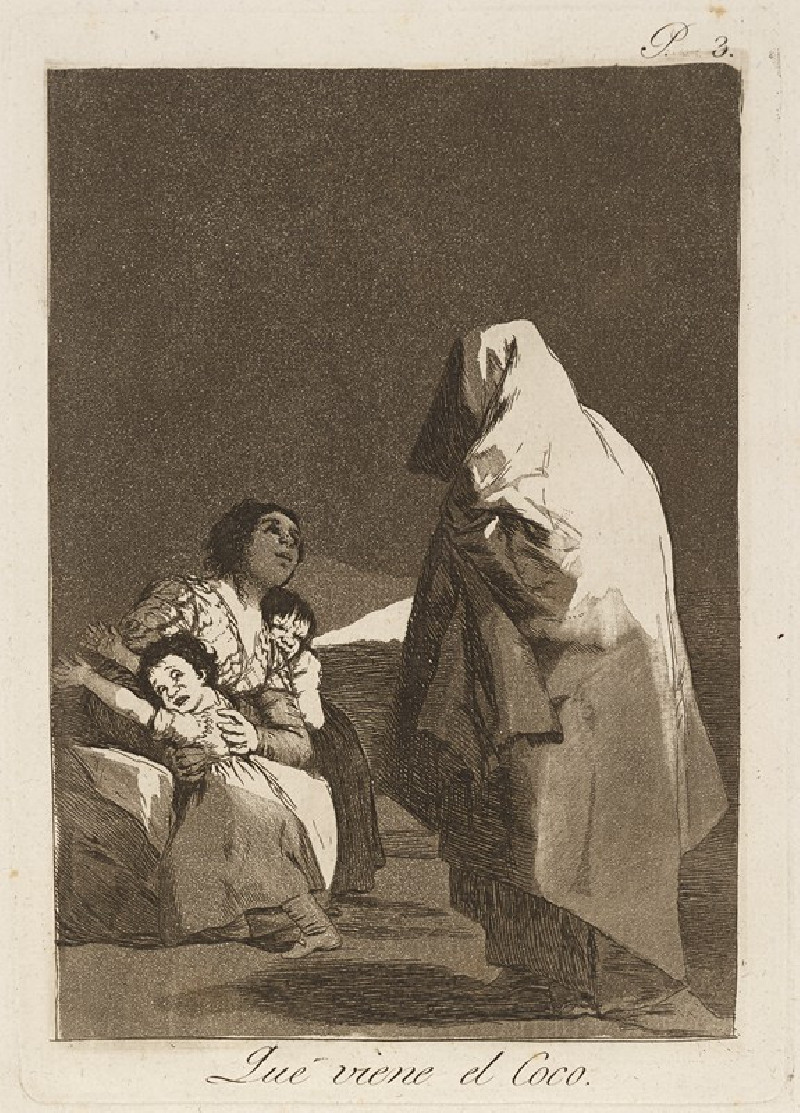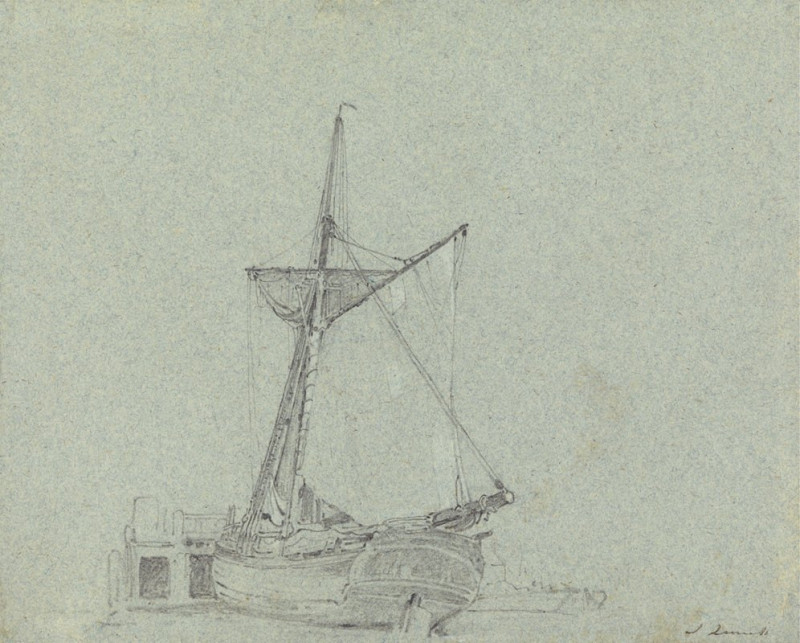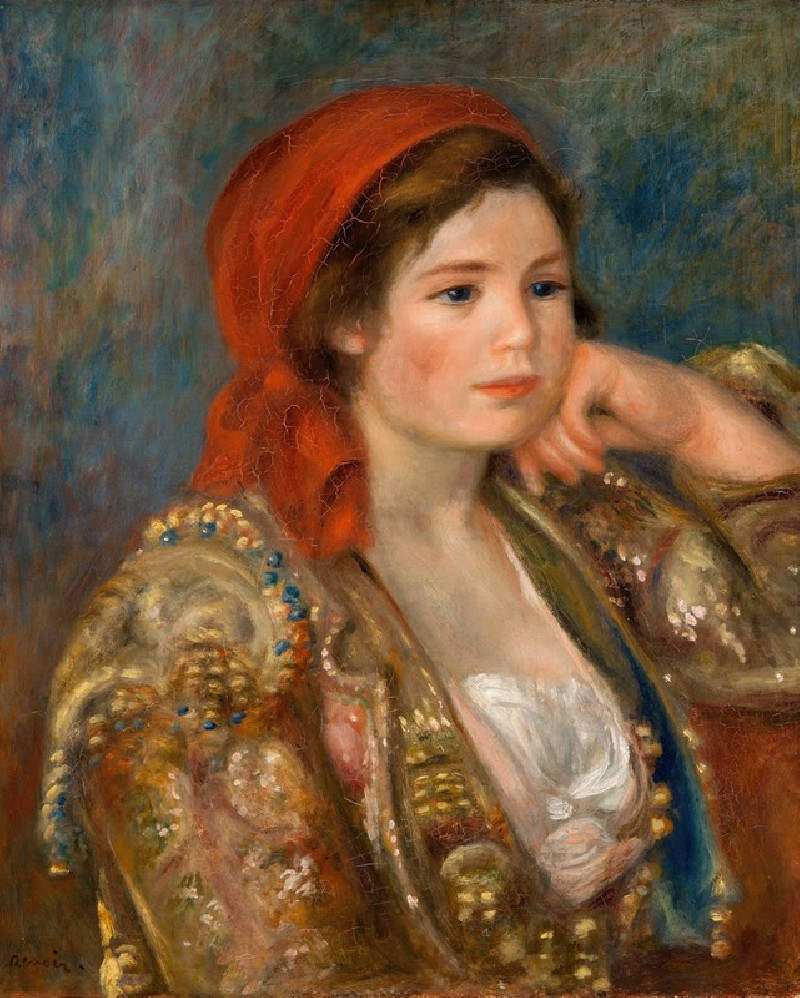Ready for the next (1905)
Technique: Giclée quality print
Recommended by our customers
More about this artwork
Udo Keppler's 1905 painting, "Ready for the Next," is a striking example of political satire, vividly capturing the essence of the early 20th-century American sentiments on economic monopolies. The painting features an allegorical representation where Uncle Sam, a familiar personification of the United States, is depicted as a matador. This appearance underscores his role in governing and overseeing the nation.In a dramatic portrayal, Uncle Sam stands over a fallen bull, which symbolizes the giant trusts and monopolies that were prevalent in that era. The bull, lethargically sprawled out on the ground, has a label reading "TRUST" on its forehead, making a clear statement about the subject of criticism. The trusts are depicted as vicious but ultimately defeated creatures, with various weapons such as knives and banderillas, sticking out of its back, each labeled with the names of different industries such as "Steel," "Standard Oil," and others, indicating the widespread control and influence these monopolies exerted.The setting is a bullfighting arena, reflecting the gladiatorial nature of American politics and economic battles of the time. The audience, which fades into the background, represents the American public – spectators to the tussles between government powers and economic behemoths.Uncle Sam's confident posture as he readies his sword for another challenge encapsulates the government’s readiness to tackle further economic giants, illustrating the ongoing struggle between regulatory forces and monopolistic entities. The artwork serves not only as a historical commentary but also as a reminder of the perpetual tension between market control and governmental intervention.
Delivery
Returns
Udo J. Keppler, since 1894. known as Joseph Keppler, Jr., was an American political cartoonist, publisher, and Native American advocate. The son of cartoonist Joseph Keppler (1838–1894), who founded Puck magazine, the younger Keppler also contributed to cartoons, and after his father's death became co-owner of the magazine under the name Joseph Keppler. He was also a collector of Native American artifacts.

